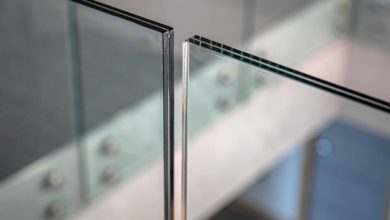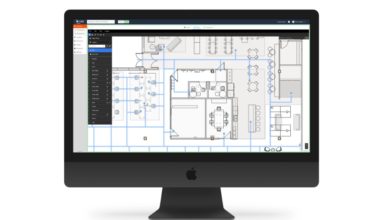Do Cameras Always Enhance Enterprise Security?
KEY TAKEAWAYS
In the digital age, it seems like the world has gone camera crazy. Wherever you go, lenses follow you. Some are motion-activated and others stationary. But whether you enter a retail store, a business office, a shopping mall, or a church, there’s a very high probability that you are being watched by an electronic eye. With so many of these watchful devices on walls, with varying security camera bandwidths, some behind mirrored ceiling fixtures, embedded in computers, and hundreds of other places, the question is do cameras help business owners achieve a higher level of enterprise security?
Much of what the devices do is about maintaining physical, not digital assets. But there is another side to the question, especially when it comes to the formal definition of enterprise security where it is to ‘processes, techniques, and technology the help guard digital assets from abuse, unapproved use, and various kinds of infiltration’. Here’s a closer look at some of the particular scenarios in which camera equipment is used, and whether it improves enterprise security in each one.
Workspace Surveillance: No
Generally speaking, employers who place multiple surveillance devices, both video and audio versions, to keep tabs on workers do not add to the overall enterprise security factor. That’s mainly because people don’t like being watched while doing their work. It’s one thing to visually surveil a data room or warehouse, but a typical office is not the place to do so.
Dash Cams for Vehicle Fleets: Yes
Anyone who operates a transport company will answer with a quick “yes” when asked if things like dash cams add to enterprise security. In fact, the entire fleet management discipline is about tracking, measuring, securing, and reporting. Telematics systems, for example, are data-heavy processes that deliver essential information to managers. Likewise, AI (artificial intelligence) dashcams in fleet vehicles add a necessary layer of video-enhanced safety. Not only do these tiny, powerful devices gather high-def footage of real-time events, but they also allow managers to view areas inside and outside of vehicles at critical times. Additionally, a fleet’s dashcam array serves as a preventive against accidents and similar situations by alerting drivers instantaneously to numerous dangers.
Warehouses: It Depends
The typical warehouse scenario is a toss-up when it comes to the question of camera monitoring for enterprise security purposes. On the one hand, warehouses usually hold physical, not digital, assets so the benefits of access control systems would apply. But on the other, nefarious adults often try to gain access to company property and steal things like computers, device peripherals, and related items that are part of the digital category.
Building and Grounds: Yes
Enterprise security is closely related to building & grounds security. That’s because human guards, video surveillance devices, fences, security gates, and other traditional types of corporate facility protection keep those unauthorized away from company property. Keep in mind that any technology, process, or technique that keeps digital assets safe is part of enterprise security. So, even a standard guard box at the main building entrance is part of the effort. Preventing unauthorized people from getting to your digital goods is at the heart of the definition of enterprise security.
Entries and Exits: Yes
By far, businesses place most of their video recording and surveillance equipment near entrances and exits of offices, data centers, storage facilities, and even cafeterias. Some devices leverage the power of facial recognition and other biometric features to make sure there are no unauthorized people in a particular area. The logic behind the practice is based on keeping potentially threatening people out, making sure only employees are on company property and using technology to perform the job seamlessly. In high-security government agencies, managers are experimenting with continuous recording of all open spaces. Whether this blanket style use of video equipment will make its way into private corporations is an open question.
Device-Mounted Video Recorders
One of the newest developments in the field of corporate digital protection is related to computer-mounted video devices. Some record every interaction between human and machine, while others just use features like facial recognition programs to identify all users. Whether they’re in laptops, desktop computers, handheld devices, tablets, or anyplace else, more businesses are relying on one camera per machine to keep unwanted users from gaining access to sensitive information and company secrets. For high security, some device-mounted cams verify user identity via multiple methods, like fingerprint scans, facial recognition, and passwords.





